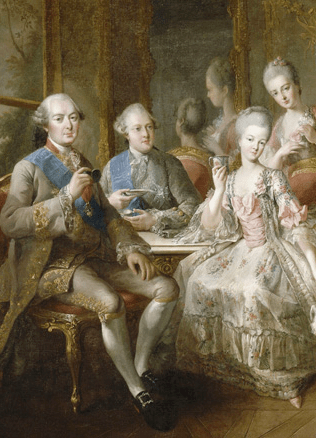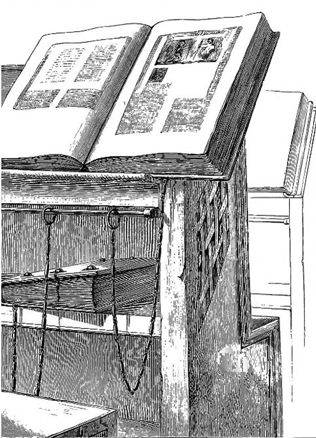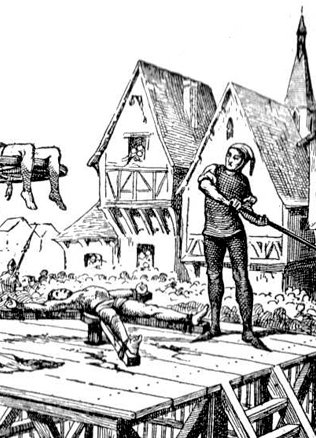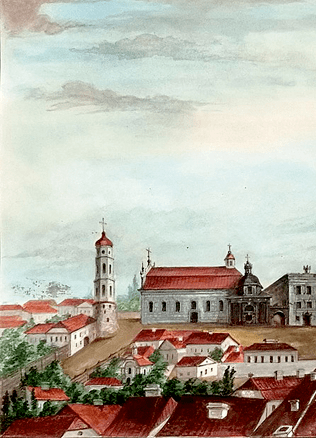Great Fires of Vilnius
Throughout its long history Vilnius, like every city, experienced a number of fires. There were several fires during which a large part of the city burned down (which occurred in 1530, 1610, 1737, 1748 and 1749). All of these fires changed the face of the city. Writer and historian Józef Ignacy Kraszewski, (1812–1887) was right when he wrote “Through these fires, Vilnius in all respects lost much and very much. Just a few buildings that had ancient characteristics remained in the Old Town. […] Later many beautiful palaces arose, but the old Vilnius […] disappeared completely.”
Fires – the companions of war
In order to avoid catastrophes, the city government began to take various measures concerning the prevention of fires: within the city walls, they demanded the building of brick houses, the covering of roofs with tiles; they moved professions tied to fire outside the city walls; they demanded the construction and maintenance of chimneys; they allowed the lighting of fires and selling of drinks to a stipulated hour in the evenings; during a fire, everyone had to hurry to a fire location with a bucket, axe, hook or other tool for extinguishing fires.
We will have a brief look at a difficult, complex and well-documented period of Vilnius’s history, which spans from the middle of the 17th century to the middle of the 18th century. The first large fire in Vilnius during this period started on August 8th, 1655 when the Muscovites occupied the city after battling the Lithuanian near the bridge over Neris. The fires may have arisen due to the battle, and during the plundering done by the Muscovites, especially by their allies the Cossacks.
Contemporaries write that the city burned for 17 days.
Upon digging deeper into the sources of the time, it appears that they exaggerated the scope of the fire. Sources show that there were a number of fires, but that the entire city did not burn down. However at the end of the occupation in the summer of 1660 that the Muscovites once again burned down the former outskirts beyond the city wall so it would be easier to defend themselves, and it may have occurred that a number of fires arose in the city during the siege of the Muscovites that had entrenched themselves in Vilnius’ castles that lasted until the end of 1661.
The next large fire in Vilnius arose on June 2nd, 1737 in the home of a female city dweller near the Royal Windmill (located near the bridge over the River Vilnia along Užupio Street). According to Kraszewski, three-fourths of the city burned down, while other sources say half. St Johns’ Church and its bell tower burned, along with university buildings and surrounding buildings.
A fire doesn’t choose its victims
The biggest and best-documented Vilnius fires were those of 1648 and 1649, which were described by Bazyli Bonifacy Jachimowicz in poetic in brochures and lists of tables of the houses that had burned down.
At nine o’clock in the morning on June 11th, 1748 a fire erupted in the brewery of a Jewish man named Rubin in the Užupis neighbourhood. The fire spread when spirits in cauldrons, which were in other breweries. The fire spread in three directions. A total of 37 different buildings burned down in the outskirts, along with a girl that had fallen in the street. The fire went to the other side of the Vilnia, to what was called “Russian Town” and spread in all directions. Jachimowicz counted that that day 469 brick buildings, 12 churches and Orthodox churches, 15 palaces, and a number of small buildings, including 142 shops and 4 pharmacies, warehouses with products and taverns burned down in the city.
Twenty-nine people of various nationalities, classes, gender and ages were killed.
There were a number of empty buildings after the fire. Several thousands of people hit by the fire left the city, in which there was looting at night. There was a stench that hung in the air from the many cattle that had burned.
Do You Know?
Measures were taken to prevent fires that had struck Vilnius numerous times: within the city walls, only brick buildings could be built and roofs had to be covered with tiles; the professions tied with fire were moved beyond the borders of the city walls; chimneys were to be built and maintained; fires could be lit and drinks could be sold only up until a pre-determined hour; during a fire, each person had to hurry to the place of the fire with a bucket, axe, hook or other tools for putting out fires.
That day in the eastern Orthodox area of the city, the Orthodox Church of the Holy Shepherd and its bell tower burned, along with the city’s Gate of the Holy Saviour and bridge over the Vilnia, the Royal Mill and Bishop’s Mill, the palace of the Uniate metropolitan, the Orthodox Church of St. Nicholas, Castle Gate, the building of the Lithuanian Supreme Tribunal court and castle garrison prison, the hospital of the Brotherhood of St. Roch, St. Johns’ Church, a Jesuit monastery and the university, the Orthodox Church of the Holy Resurrection, butchers’ stalls and other shops.
In the western Catholic part as well as partially in the Jewish part of Vilnius, the Franciscans’ Church of the Assumption of the Holy Virgin Mary together with its monastery, the Dominicans’ Church of the Holy Spirit and Church of the Holy Trinity, the Piarist monastery, two synagogues and their brick library as well as other Jewish public buildings and brick houses, the Church of St. Mary Magdalene and its hospital, the Bishops’ Palace (now the Presidential Palace), and Vilnius’ Evangelical Lutheran Church. The outskirts also burned down, which was the location of many wooden houses.
The fateful spark
While Vilnius was still being rebuilt, another fire arose on June 8th, 1749. It had been a hot and dry summer. A spark that flew out of a kitchen chimney fell on the roof of a house near Subocz Gate. A fire broke out that went through the city wall and into Russian Town: a hospital was burned down, along with a convent, bell tower and the Orthodox Church of the Holy Spirit. Subačiaus Street and Didžioji Street and the surrounding alleyways, which had not suffered the year before, burned. The Merchants’ Archive in the Town Hall burned, along with the nearby former shops and tower with a clock. St. Casimir’s Church burned down for the third time.
According to Jachimowicz, a total of 292 brick houses and houses with various structures belonging to them burned and suffered damaged, along with an Orthodox church and 4 other churches, monasteries and hospitals. Some buildings that were being rebuilt or had been rebuilt after the fire of the previous year also burned down. This time there were fewer victims, as only two men in a brick building of the Discalced Carmelite monks died.
The streets of Vokiečių, Arklių, Rūdninkų, Žemaitijos, Trakų, Stiklių, and Žydų along with other streets were once again devastated. The Church of St. Nicholas burned, along with the Church of the Holy Trinity and the Dominican church. The monasteries of the Basilians, Dominicans, Piarists and Franciscans suffered damage. The Jews suffered a second time: two synagogues burned down, along with a library, sauna, brick building for gathering together, their brotherhood’s brick house, and hospital. Their shops burned down, but they were able to save their goods.
Literature: R. Janonienė, M. Čiurinskas, Du liudijimai apie 1610 m. didįjį Vilniaus gaisrą, Naujasis židinys – Aidai, 2006, Nr. 11, p. 452–458.
Elmantas Meilus



